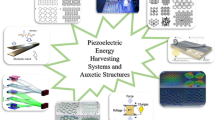Abstract
Penetration of a microelectrode into the cell soma is one of the most vulnerable stages of the method intracellular recording. Traumatic neuronal activity after piercing the membrane with a microelectrode can be an indicator of neuronal damage. In this paper we report the results from tests of our pulse electromagnetic micromanipulator. This device is designed to reduce the neuronal damage during the insertion of a microelectrode and to allow the penetration into the cell to be more controlled. Intracellular recordings were employed in experiments carried out on neurons of the isolated central nervous system of the grape snail (Helix pomatia). The results obtained by using our micromanipulator show the absence of a pronounced neuronal reaction in response to the invasion of a microelectrode, the cell rapidly return to a stable state, and registration of neuronal activity is possible for a long period of time (many hours). These findings indicate the relevance of using the proposed device in experiments that record intracellular activity of the cells of the nervous system and other excitable tissues.



Similar content being viewed by others
REFERENCES
G. Ling and R. W. Gerard, J. Cell Comp. Physiol. 34 (3), 383 (1949).
E. S. Nikitin, Doctoral Dissertatiojn in Biology (Moscow, 2015).
V. Orlov, A. Sukhov, O. Kit, et al., Cardiometry, No.12, 40 (2018).
P. G. Kostyuk, Microelectrode Techniques (Naukova Dumka, Kiev, 1960) [in Russian].
J. G. Nicholls, A. R. Martin, B. G. Wallace, and P. A. Fuchs, From Neuron to Brain, 4th ed. (Sinauer Assoc., 2001; Editorial URSS, Moscow, 2003).
R. D. Purves, Microelectrode Methods for Intracellular Recording and Ionophoresis (Academic, London, 1981; Mir, Moscow, 1983).
J. M. Bekkers, R. J. Bookman, M. J. Delay, et al., The Axon CNS Guide (Molecular Devices Corp., USA, 2006). http://www.octopus.huji.ac.il/course/Links/ Axon_Guide.pdf.
S. A. Ivlev, A. G. Sukhov, and G. G Bondar’, Biomed. Radioelektron., No. 4, 35 (2015).
Author information
Authors and Affiliations
Corresponding author
Ethics declarations
CONFLICT OF INTEREST
The authors declare that that they have no conflict of interest.
COMPLIANCE WITH ETHICAL STANDARDS
The conducted experiments fully comply with current national and international standards in the field of ethics.
Additional information
Translated by G. Bondar and M. Belousova
Abbreviation: PEMM, pulse electromagnetic micromanipulator.
Rights and permissions
About this article
Cite this article
Orlov, V.I., Ivlev, S.A. & Bondar, G.G. Approach to Minimize Damage Resulting from Microelectrode Insertion into Neuron. BIOPHYSICS 65, 631–634 (2020). https://doi.org/10.1134/S0006350920040144
Received:
Revised:
Accepted:
Published:
Issue Date:
DOI: https://doi.org/10.1134/S0006350920040144




